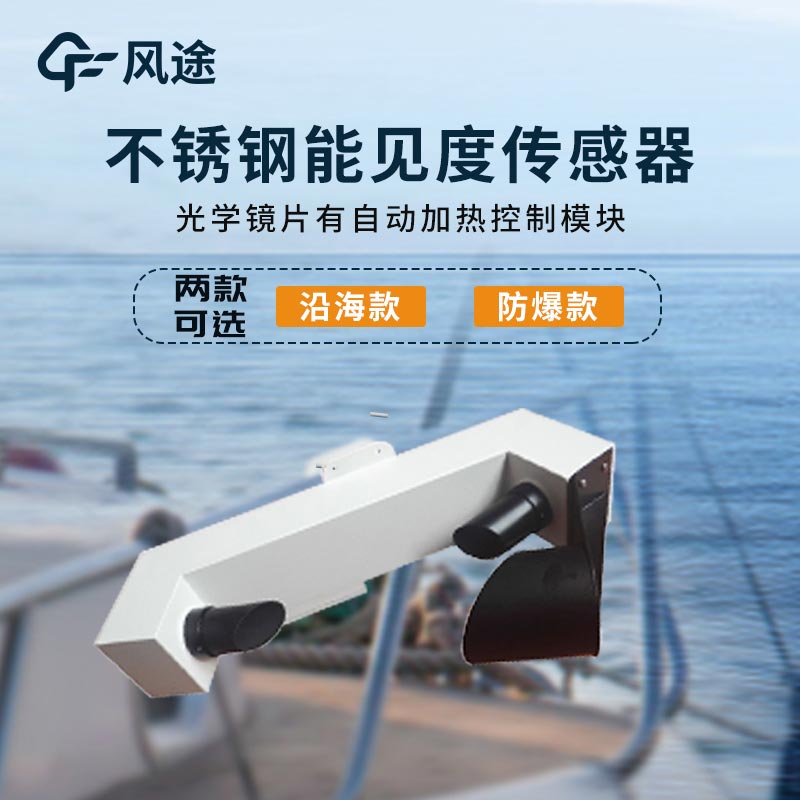Shandong Fengtu IOT Technology Co., Ltd
Sales Manager:Ms. Emily Wang
Cel,Whatsapp,Wechat:+86 15898932201
Email:info@fengtutec.com
Add:No. 155 Optoelectronic Industry Accelerator, Gaoxin District, Weifang, Shandong, China

Sales Manager:Ms. Emily Wang
Cel,Whatsapp,Wechat:+86 15898932201
Email:info@fengtutec.com
Add:No. 155 Optoelectronic Industry Accelerator, Gaoxin District, Weifang, Shandong, China
time:2024-06-19 08:41:35 source:Weather Station viewed:712 time
Visibility is measured in two main ways: visually by hand and by automated instruments. Manual visual measurements rely on observers to determine visibility levels by visually assessing the visible clarity of landmarks or objects at different distances at specific times of the day. This method has limitations such as limited frequency of measurements, a high element of subjective judgement, and the ability to make only rough estimates, so automated instrument measurements are needed.
Globally, visibility observers are divided into two main categories: transmission and scattering. Transmissive visibility instruments require a longer baseline and therefore a larger footprint, which limits their use in coastal monitoring stations, lighthouse automated weather stations, and on ships. However, due to its self-detection capability and excellent performance in low visibility conditions, the transmissive visibility instrument is widely used in civil aviation. In contrast, scattering visibility instruments are favoured for their compact size and affordable price, and have been widely deployed in a variety of areas such as docks, aviation, and highways. With their portability and cost-effectiveness, such instruments provide effective visibility monitoring solutions in a wide range of environments.
Our company has introduced a smart visibility monitor based on the aerosol forward scattering principle. The device, which consists of core components such as a transmitter, receiver and microprocessor, offers a variety of measurement range options, including ranges from 10 metres to 10 kilometres, 30 kilometres and 50 kilometres, with an optional module for monitoring rain and snow weather phenomena. It supports RS485 output and is compatible with Modbus and ASCII communication protocols.
The visibility meter provides accurate and real-time visibility readings, helping to prevent driving and navigational risks caused by low visibility conditions such as fog, mist and haze. The device is suitable for use in a wide range of transport applications such as weather stations, airports, motorways, waterways and large ships, providing vital data to support safe operations.

In ancient times, without modern technology, it was very difficult for people to predict weather changes. But our ancestors demonstrated their wisdom by observing the sky and animal behaviour to predict the weather. Nowadays, with the advancement of technology, we have advanced weather detection ins...
Ultrasonic wind speed and direction meter is an advanced equipment to measure wind speed and direction through ultrasonic waves. Its working principle is to utilize the characteristics of ultrasonic wave propagation in the air to deduce the wind speed and direction by measuring the difference betwee...
Explosion-proof automatic weather station, mainly used for environmental monitoring and management in electric power, petroleum, chemical and other industries, is a meteorological observation instrument. It can monitor the changes of various meteorological data in the atmosphere exactly within a cer...
weather instruments can be used to measure the weather, allowing you to monitor wind speed, direction, temperature, pressure, humidity and many other meteorological elements....